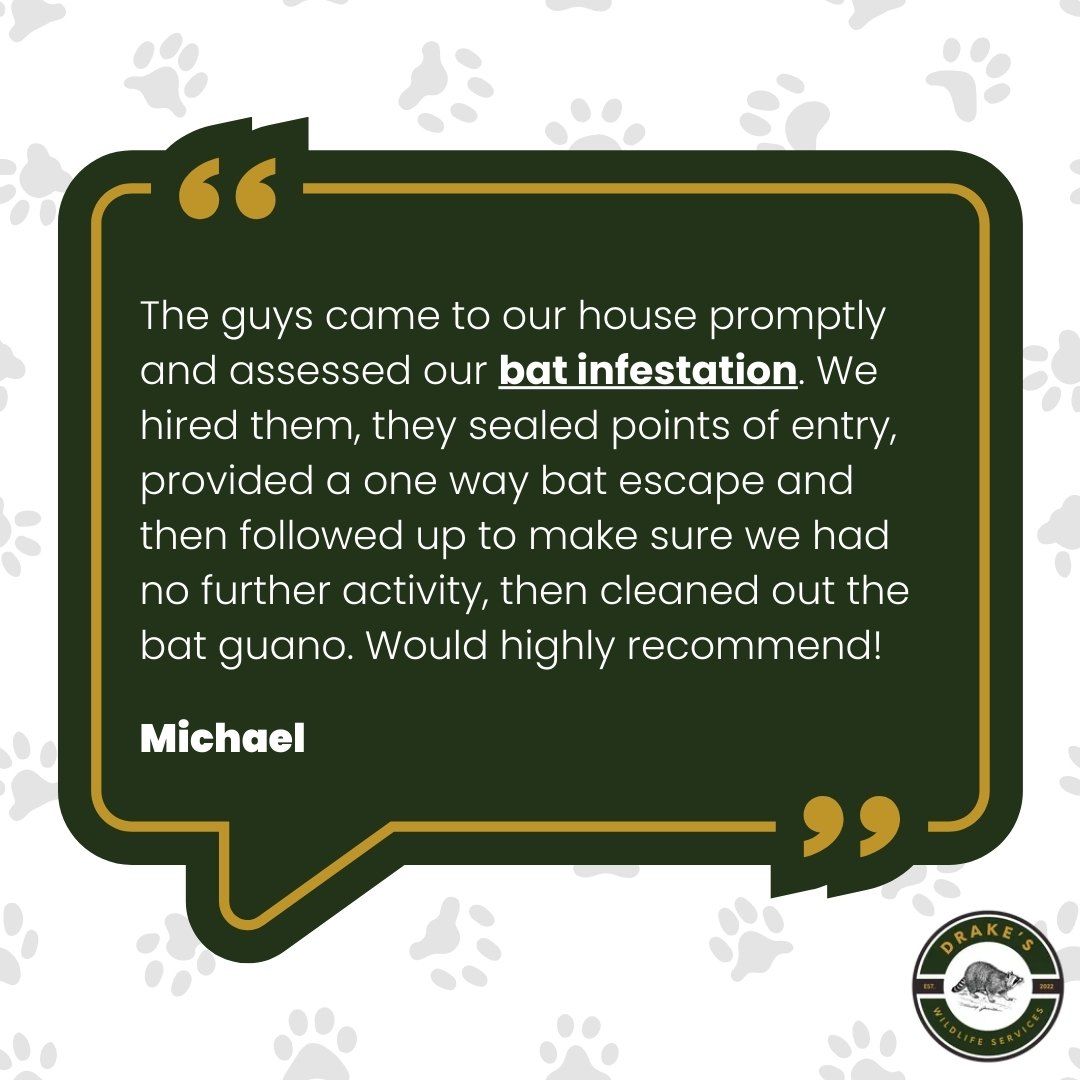Bat Exclusions: Keep Bats Out of Your Home This Halloween with Humane Pest Control
As Halloween approaches, spooky decorations pop up. One creature seems to take center stage: bats. With their silent wings and shadowy silhouettes, bats have long been associated with the eerie and supernatural. Although they make for great Halloween décor, bats in real life can be a big nuisance when they decide to move into your home.
Have you ever heard the flutter of wings in your attic or seen a bat swooping around at dusk? It might be time to consider bat exclusion, the humane and effective way to handle your unexpected Halloween guests.
Why Bats Choose Your Home
When the temperature drops, just as we look for ways to stay warm and cozy, bats also seek shelter from the cold. Unfortunately, that can often lead them into homes through chimneys, vents, and tiny gaps in roofing or siding. Attics, in particular, offer a dark, quiet space that mimics their natural roosting environments.
Bats are more than just unwelcome houseguests, though. In the wild, they serve a vital role in controlling insect populations—particularly mosquitoes, which are a common problem in many areas. Despite this, sharing your home with bats can be problematic due to health concerns and potential property damage, particularly from their droppings, known as guano.
Bat Myths Debunked
Bats have been central figures in Halloween lore for centuries, largely due to their association with vampires and other dark creatures. But in reality, bats are generally harmless and shy creatures that would rather avoid humans than engage with them. Despite their spooky reputation, bats don’t attack people, and they certainly aren’t interested in your blood. However, like any wild animal, bats can carry diseases like rabies, so it’s important not to handle them directly.
Another issue to keep in mind is that bats are often protected species, depending on where you live. Many local laws make it illegal to kill bats, which is why exclusion—a humane removal process—is not only the best option but often the only legal one.
Here in Northern Indiana and Northeastern Indiana, we’re most likely to encounter little brown bats (also known as the "Indiana bat" and can be seen in the main blog image above), large brown bats, and many other species, who are often looking for warm places to roost during the colder months.
What is Bat Exclusion?
Bat exclusion is a humane approach to bat removal that focuses on safely letting bats leave your home and making sure they can’t get back in. Unlike repellents or other DIY methods, bat exclusion doesn’t harm the animals or leave them trapped inside your home. Instead, it ensures that bats exit the premises without the possibility of re-entry.
This method is especially important during certain times of the year when bats are most active. The goal is to create a one-way system—letting bats out without giving them a way back inside. Not only is this effective, but it’s also aligned with legal and ethical requirements that protect bats.
The Bat Exclusion Process
When you call in Drake’s Wildlife Services for bat exclusion, we typically follow a detailed process:
Step 1: Inspection
A thorough inspection is the first step in identifying where bats are entering your home and locating their roosting spots. Professionals will check common entry points, such as roofline gaps, vents, and chimneys.
Step 2: Exclusion Devices
Once the entry points are identified, exclusion devices—typically one-way doors or valves—are installed. These devices allow bats to exit your home, but they prevent them from re-entering. Since bats are nocturnal, they’ll leave at night to hunt, making it the perfect time for these devices to do their job.
Step 3: Sealing Entry Points
Once all bats have exited, the next step is sealing up the entry points to prevent future invasions. This could involve repairing cracks, adding screening to vents, and securing other potential gaps in your home’s exterior.
Step 4: Cleanup and Disinfection
After the bats are gone, it's important to clean up any droppings and disinfect the area. Bat guano can carry harmful pathogens, so professional cleaning is often recommended to ensure the space is safe.

When to Call the Bat Experts
If you think you might have a bat problem, there are a few important signs to notice:
- Nocturnal noises: Scratching, fluttering, or squeaking sounds, especially in attics or walls.
- Droppings: Guano around entry points or in attics can be a clear sign of bat activity.
- Sightings: Seeing bats flying near your home at dusk could indicate a roost nearby.
It’s important to remember that bat exclusions aren’t a DIY task. Not only can dealing with bats be dangerous due to the risk of rabies, but improper handling can lead to legal consequences. Professionals have the training, tools, and experience to safely and legally remove bats and keep them out for good.
Preventing Future Bat Problems
After a successful bat exclusion, there are steps you can take to prevent bats from returning:
Regular inspections: Check your home periodically for new gaps or openings that bats could use to enter.
Secure chimneys and vents: Install chimney caps and vent covers to keep bats from sneaking in.
Trim trees and foliage: Overhanging branches and dense trees near your roof can provide easy access for bats to reach your home.
By taking these preventive steps, you can ensure that your home stays bat-free for many Halloweens to come.
Celebrate Halloween Without the Bats
While bats may be iconic symbols of Halloween, no one wants them as real-life houseguests. This Halloween season, take a proactive approach to keep the spooky creatures outside where they belong. If you’ve noticed any signs of bats in your home, it’s time to call in the professionals for a humane and effective exclusion.

Contact Drake’s Wildlife Services today to schedule an inspection and enjoy a bat-free home—just in time for Halloween!
Contact Us
We will get back to you as soon as possible.
Please try again later.
All Rights Reserved | Drakes's Wildlife Services
